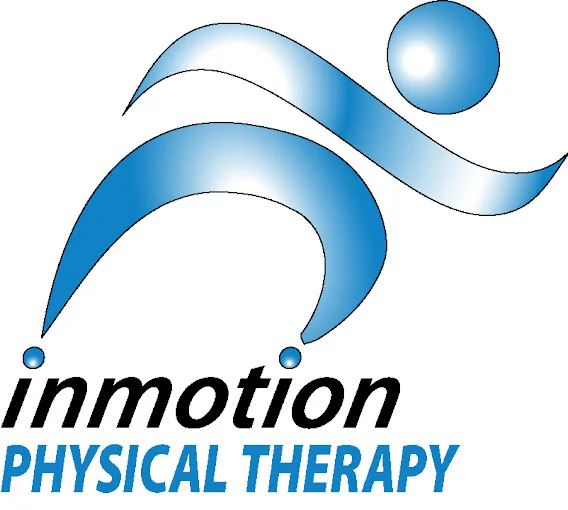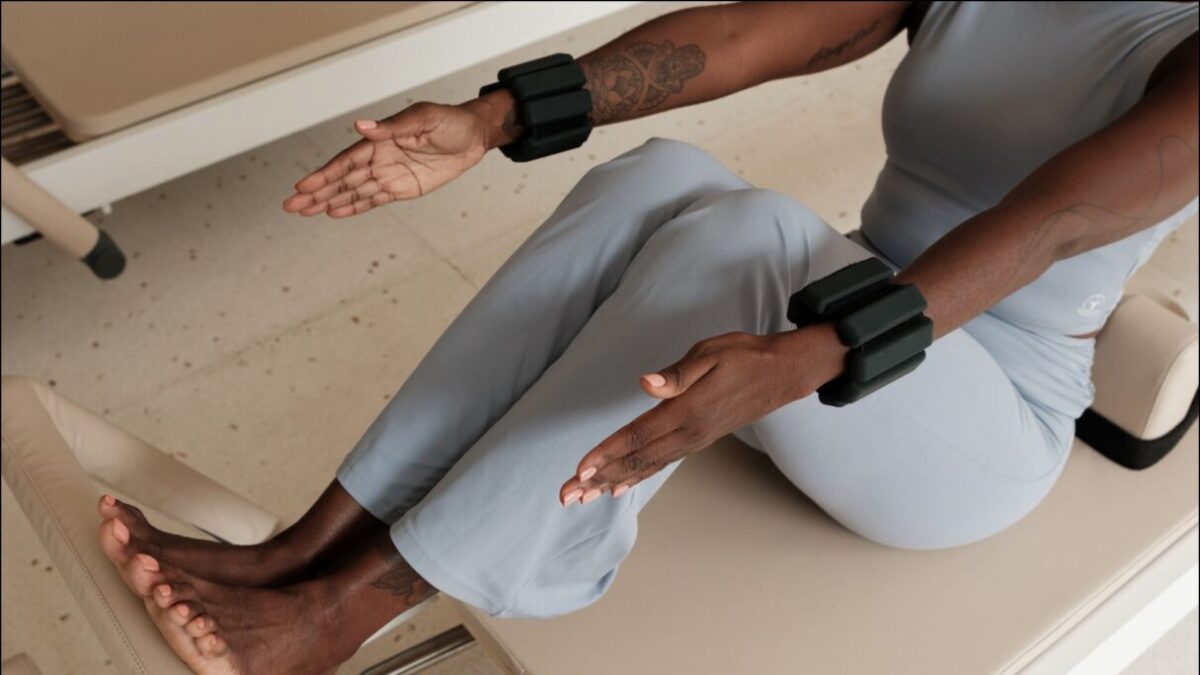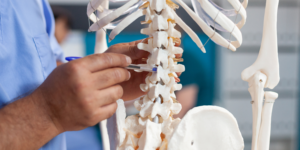The landscape of women’s sports tells two contrasting stories. While there has been an extraordinary 1,000% increase in girls’ sports participation since Title IX, we’re still facing a crucial challenge: by age 14, girls are dropping out of sports at twice the rate of boys. As a physical therapist who specializes in treating female athletes, this statistic isn’t just a number to me – it’s a call to action.
I understand this landscape intimately, both as a healthcare provider and as a former athlete. My journey from Division I soccer player to Doctor of Physical Therapy has shown me firsthand how sports shape not just our bodies, but our entire lives. The determination, resilience, and teamwork I learned on the soccer field didn’t just help me succeed as a PT and business owner – they’ve been invaluable in every aspect of my life, including raising my three children.
Creating supportive training environments for female athletes isn’t just about keeping girls in sports – it’s about investing in their future success. Consider this: 90% of female Fortune 500 executives share one compelling commonality – they were athletes. Women who played sports typically earn 8% more than those who didn’t, and they’re more likely to maintain higher levels of physical activity throughout their lives.
At In Motion Physical Therapy, we’re committed to helping female athletes near Farmingdale not just recover from injuries, but thrive in their athletic pursuits. Because when we support female athletes, we’re not just building stronger bodies – we’re building stronger futures.
The Hidden Challenges in Women’s Sports
The journey of a female athlete isn’t just about training and competition. It’s about navigating a complex landscape of physical, psychological, and societal challenges that often go unaddressed in traditional sports medicine settings.
The Gender Data Gap in Sports Medicine Research
Women make up only 3% of subjects in sports medicine research, creating a dangerous knowledge gap in understanding female athletes’ needs. This means most training protocols, injury prevention strategies, and recovery guidelines are based on research conducted primarily on male athletes. For female athletes, this can lead to suboptimal treatment approaches and increased risk of injury.
Training Spaces Designed Without Women in Mind
Traditional athletic facilities and training environments were historically designed with male athletes as the default, creating challenges for female athletes that many might not recognize. From poorly lit parking areas that create safety concerns during early morning or evening training sessions, to inadequate changing facilities and privacy considerations, these spaces often fail to account for women’s basic needs. According to research, safety and transportation issues significantly impact female athletic participation – especially in urban environments where traveling to facilities through unsafe neighborhoods can be a major barrier. When female athletes don’t feel physically safe and comfortable in their training environments, it affects not only their ability to focus on performance but also their likelihood to continue participating in sports long-term.
Quality of Training Resources
One of the most significant challenges female athletes face is the disparity in resources:
- Limited access to quality training facilities and equipment
- Less optimal practice and training times
- Fewer experienced coaches focused on women’s programs
- Reduced funding for equipment and uniforms
- Limited access to specialized medical care and rehabilitation services
These resource gaps don’t just affect day-to-day training – they can significantly impact long-term athletic development and injury prevention
Social and Cultural Barriers
Research shows that female athletes often face unique pressures in how they respond to injuries and pain. According to studies analyzed in our research, female athletes often demonstrate different behavioral patterns post-injury, including a tendency toward reticence in return-to-play activities and self-modulation of activity levels. This complex relationship with injury and recovery can impact both immediate treatment decisions and long-term athletic outcomes.
Female athletes often face unique social pressures that can affect their training and performance:
- Discrimination based on real or perceived sexual orientation and gender identity
- Social stigma around certain sports or athletic pursuits
- Bullying or social isolation in competitive environments
- Pressure to conform to societal beauty standards while maintaining athletic performance
- Lack of visible female athletic role models
How Physical Therapists Can Better Serve Female Athlete’s Needs
Understanding these challenges is just the first step. At In Motion Physical Therapy, we believe that physical therapy clinics have a unique opportunity to create positive change in how we support female athletes. Here are three crucial ways we can better serve this population:
Create True One-on-One Care Environments
It’s not enough to simply treat the injury – we need to create spaces where female athletes feel safe, heard, and supported. This means:
- Providing private treatment areas that ensure comfort and dignity
- Scheduling adequate time for thorough evaluations and treatments
- Creating well-lit, secure parking areas and entrance ways
- Ensuring female staff members are available for athletes who prefer working with women
- Building trust through consistent care with the same physical therapist who listens to their concerns
Implement Female-Specific Protocols
Given the significant gender data gap in sports medicine research, physical therapists must be proactive in developing and implementing female-specific treatment approaches:
- Understanding how hormonal cycles affect injury risk and recovery
- Following targeted programs for common female athlete injuries (like neuromuscular re-education warm ups to prevent ACL tears- link to female ACL blog post)
- Considering the unique biomechanical needs of female athletes in different sports- Treating a pitcher in softball and baseball are completely different. The mechanics of throwing the ball are not the same, and this requires the expertise of the physical therapist to understand the differences.
- Regular assessment and modification of treatment plans based on individual response
Address the Whole Athlete
Physical therapy for female athletes must go beyond just treating the physical injury. A comprehensive approach includes:
- Understanding the athlete’s complete athletic environment and support system
- Providing education about injury prevention and body awareness
- Creating realistic timelines that respect both physical and mental recovery
- Building confidence through achievable progression milestones
- Connecting athletes with additional resources when needed (nutrition, mental health, strength training)
These approaches aren’t just theoretical – they’re principles we put into practice every day at In Motion Physical Therapy.
The Impact of Specialized Care for Female Athletes: Meet Kaylee
When Kaylee first came to In Motion Physical Therapy, she was facing every soccer player’s nightmare: an ACL tear. What we didn’t know then was that her journey would not only lead to a successful recovery but would also inspire her future career path and demonstrate the profound impact of comprehensive, supportive care.
Our specialized approach focused on creating a supportive environment where Kaylee could thrive both physically and mentally. Through individualized treatment plans, sport-specific training, and consistent encouragement, we helped Kaylee navigate not one, but two successful ACL recoveries.
What made the difference? Our commitment to treating the whole athlete, not just the injury. We provided:
- Female-specific protocols that addressed her unique biomechanical needs
- Sport-specific return-to-play training for soccer
- Regular conversations about concerns, progress, and goals
- We worked together with her strength coaches to ensure she was undergoing proper training
- A supportive environment where she felt heard and understood
The impact of this comprehensive care extended beyond physical recovery. Kaylee’s experience with us inspired her to pursue a career in physical therapy herself. As her mother shared in an email right before they moved out of state:
“Kaylee is doing so great and that’s all because of you and all the therapists. Your professionalism, kindness, treatments and just your talks so Kaylee can get through two ACL surgeries… You will be missed by us!”
Kaylee’s success story exemplifies why specialized care for female athletes matters. Through understanding their unique needs, providing comprehensive support, and creating an environment of trust, we help athletes not just recover, but thrive in their athletic pursuits. Kaylee is now continuing her soccer career at the collegiate level as well as studying to become a Physical Therapist herself!
Physical Therapy isn’t just about treating an injury; it’s about supporting the whole person and building lasting relationships and positive outcomes that extend far beyond our clinic walls.
Key Components of a Female-Focused Training Environment
Creating an effective training environment for female athletes goes beyond having the right equipment or protocols. It requires a thoughtful approach that considers both physical and psychological needs. Here are three essential components we’ve found crucial for success:
Trust and Confidence Building
As a female physical therapist and former Division I athlete, I’ve experienced firsthand how trust transforms the rehabilitation process. Building trust starts with understanding that each athlete’s journey is unique. We take time to listen to concerns about returning to play, understand performance anxieties, and acknowledge the complex relationship between athletic identity, achievement, and body image.
Trust develops when athletes know they’re truly heard. We create this foundation by maintaining consistent communication, celebrating small victories, and adjusting treatment plans based on individual feedback. When an athlete trusts their physical therapist, they’re more likely to fully engage in their recovery process and maintain long-term athletic participation.
Judgment-Free Space
A judgment-free environment is crucial for female athletes to feel comfortable discussing their concerns openly. This means creating a space where athletes can talk about everything from menstrual cycle impacts on training to body image concerns without hesitation or embarrassment.
We’ve found that female athletes often hesitate to discuss certain topics in traditional training environments due to embarrassment or fear or being made fun of. By explicitly creating a judgment-free zone, we enable honest conversations about pain, fatigue, and recovery needs. This openness leads to better treatment outcomes and stronger athlete-provider relationships.
Education and Empowerment
Knowledge is power, especially in athletic performance and recovery. We believe in educating our athletes about their bodies, their injuries, and their recovery process. This includes:
Understanding the ‘why’ behind each exercise and treatment approach helps athletes take ownership of their recovery. We teach athletes about their body’s responses to training and injury, helping them recognize normal physiological changes and warning signs that need attention.
When athletes understand the science behind their treatment, they become active participants in their recovery rather than passive recipients of care. This education extends beyond immediate injury treatment to include:
– Long-term injury prevention strategies
– Understanding training load management
– Recognizing the relationship between nutrition, sleep, and recovery
– Adapting training around hormonal cycles
– Developing sustainable athletic practices
Through education, athletes gain the confidence to make informed decisions about their training and recovery. This knowledge stays with them long after they leave our care, helping them maintain healthy athletic practices throughout their careers.
By focusing on these three key components – trust building, creating judgment-free spaces, and emphasizing education and empowerment – we create an environment where female athletes can thrive. This approach doesn’t just support better physical outcomes; it helps develop stronger, more confident athletes who are equipped to advocate for their needs throughout their athletic careers.
The Critical Role of Female Physical Therapists in Athletic Development
The importance of female representation in physical therapy and sports medicine extends far beyond simple demographics. It’s about creating an environment where female athletes can see themselves reflected in their healthcare providers and mentors, understanding that their unique experiences and challenges are truly understood.
The Current State of Female Sports PTs
A concerning pattern emerges when we look at sports medicine as a whole. Recent systematic reviews reveal significant inequalities in how male versus female athletes are evaluated in sports medicine research. Even more telling is the disparity in healthcare providers: while exact statistics vary by region, there’s a clear underrepresentation of female sports medicine specialists and physical therapists, particularly in high-level athletics.
Why Female Mentorship Matters
The impact of female mentorship in athletics is multifaceted:
Understanding the Complete Picture
Female physical therapists and mentors often bring a deeper understanding of:
- The unique physical challenges female athletes face
- The psychological pressures of competing in male-dominated spaces
- The reality of navigating sports with fewer resources and support systems
- The balance of athletic pursuits with societal expectations
Career Path Visibility
Female athletes face a stark reality: the financial rewards and professional opportunities in most sports are significantly lower for women than for men. Consider these contrasts:
- Lower salaries for professional play
- Fewer professional league opportunities
- Reduced sponsorship and endorsement possibilities
- Limited media coverage affecting visibility and earning potential
This economic disparity makes the role of mentors even more crucial. Female mentors can help athletes:
- Identify diverse career paths within sports and athletics
- Navigate the transition from competitive athletics to professional life
- Understand how athletic skills translate to business success (remember: 90% of female Fortune 500 executives were athletes)
- Build networks that support long-term career development
Why Community Matters in Female Athletic Performance
Breaking Down Isolation
Female athletes often walk a solitary path. Many find themselves as the only girl on their team or training in facilities where they rarely see other female athletes. They might lack female role models in their sport, navigate complex body image concerns alone, or face injury recovery without peers who truly understand their journey.
But when these athletes find their community, everything changes. Suddenly, solo struggles transform into shared experiences. What was once isolating becomes an opportunity for connection, validation, and collective wisdom.
The Power of Shared Experience
When female athletes train together, they create something far more meaningful than just workout partnerships. They build networks of understanding where they can openly discuss the real challenges of athletic life. Together, they learn to balance the intense demands of training with academic pressures. They share insights about how hormonal cycles affect their performance and recovery. They support each other through setbacks, celebrate victories that others might not understand, and create safe spaces to discuss everything from body image to performance anxiety.
Community Impact on Performance
The research is clear: community makes a measurable difference in athletic success. Female athletes who train in supportive environments show higher retention rates in their sports. They demonstrate greater confidence, stick to their training programs more consistently, and recover from injuries more effectively. Perhaps most importantly, they achieve greater long-term success in their athletic pursuits and continue playing longer.
Building Community in Physical Therapy
At In Motion Physical Therapy, we’ve seen firsthand how recovery and performance optimization flourish in community settings. We create natural opportunities for athletes to connect during their recovery journeys. Success stories from one athlete’s recovery journey inspire and encourage others just starting their own.
We’ve built strong networks with local teams and coaches, creating a web of support that extends far beyond our clinic walls.
When we invest in building strong communities for female athletes, we create lasting change. Today’s supported athlete becomes tomorrow’s mentor. Every shared success story strengthens the foundation for the next generation. This is how we create sustainable, long-term change in women’s sports – one community connection at a time.
Taking the First Step
If you’re a female athlete or parent of one, here’s what you should look for in a physical therapy provider or strength and conditioning coach:
– Experience working with female athletes
– Understanding of sport-specific demands
– Commitment to individualized care
– Creation of a supportive, comfortable environment
At In Motion Physical Therapy, we’re committed to supporting female athletes through every stage of their athletic journey. Whether you’re dealing with an injury, looking to prevent one, or seeking to optimize your performance, we’re here to help you achieve your goals.
Remember: your needs as a female athlete are unique, and you deserve care that reflects that uniqueness. Don’t settle for one-size-fits-all approaches when it comes to your athletic career and health.
Ready to take the next step in your athletic journey? Contact us to schedule an evaluation and learn how we can help you achieve your athletic goals.
Resources:
- Scheadler T, Wagstaff A. Exposure to Women’s Sports: Changing Attitudes Toward Female Athletes. The Sport Journal. 2018;24.
- https://www.michiganmedicine.org/health-lab/changing-sports-medicine-game-female-athletes
- https://pmc.ncbi.nlm.nih.gov/articles/PMC4805849/
- https://pmc.ncbi.nlm.nih.gov/articles/PMC2213798/
- https://www.apu.apus.edu/area-of-study/nursing-and-health-sciences/resources/is-there-gender-discrimination-in-sports/
- https://www.womenssportsfoundation.org/do-you-know-the-factors-influencing-girls-participation-in-sports/



